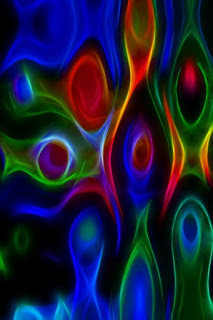Is Digital Management More Art or Science
 Management is about coordination of the activities of a business in order to achieve defined objectives. Management is often included as a factor of production along with machines, materials and money. According to the management guru Peter Drucker (1909-2005), the basic task of management includes both marketing and innovation. Management consists of the interlocking function of creating corporate policy and organizing, planning, controlling, and directing an organization’s resources in order to achieve the objectives of that policy.(businessdictionary.com). The business world has shifted from industrial age to information age, now in the digital era, the fundamental of management concept is still the same. However, with the speed of change and advance of technology, the digital business is always on and hyperconnected, has digital management become less mechanical and more organic? Is management more art or science nowadays?
Management is about coordination of the activities of a business in order to achieve defined objectives. Management is often included as a factor of production along with machines, materials and money. According to the management guru Peter Drucker (1909-2005), the basic task of management includes both marketing and innovation. Management consists of the interlocking function of creating corporate policy and organizing, planning, controlling, and directing an organization’s resources in order to achieve the objectives of that policy.(businessdictionary.com). The business world has shifted from industrial age to information age, now in the digital era, the fundamental of management concept is still the same. However, with the speed of change and advance of technology, the digital business is always on and hyperconnected, has digital management become less mechanical and more organic? Is management more art or science nowadays? Management has become an art out of necessity to address the current business relationship between the employee and organization. Now the workplace is not the place we go, but the tasks we accomplish, the employee has taken more responsibility in determining the parameters of the work relationship. Gone are the days where organizations can influence or dictate the parameters of the work relationship. If an organization is to retain and attract talent, the organization must adapt and create the environment that will meet the objectives of high performers and high potential request. Today, at people-centric organization, the primary focus of the employee is to ensure that the work relationship will be beneficial to the overall career goals of that individual. The needs of the organization become secondary, it means to help talent employees gain experience and exposure. It means that management must adapt to the individual's career goals and objectives. It does not mean that within that framework, the overall departmental or corporate objectives are to be ignored. Within the individual establishing work relationship parameters, the individual's KPI can still be tied to the business’s goals. What management must be aware of is that today, implementing general management styles and principles are not an effective way to retain or attract high performers
You need to better define "Science" and "Art" to make your case. Management Development focuses on the "soft stuff," more of the art and less scientific rules of managing. With more rapid change, the advent of computers, the greater value and contribution of employees who were engaged, what to do about building engagement, the increasing role of employee knowledge, and knowledge growth that would be most valuable if employees wanted to utilize and share it since often they knew things that were so new that their managers couldn't even tell them to work on it. A science is created whenever people start applying the Scientific Method of observing, creating hypotheses, and proving or disproving those hypotheses. This is exactly the process that disruptive innovators use - not to mention artists as they are learning / fine-tuning their craft.
 Be people centric, well align the key business elements such as people, process and technology are the management principles. Organizations are shifting from silo industrial mode to holistic digital mode; from command-control management style to open and agile digital flavor. However, there is no set of universally applicable rules in management or that consultants should not follow a cookbook approach. From a technology perspective we have ample evidence that despite massive investments in governance, change management, project management,. risk management and other process technology, projects still fail at an alarming rate. Research indicates a success rate of no more than 20%, and the 80% of failures represent billions of dollars. It is not a matter of complexity, it is a matter of creating silos filled with "specialists" with very narrow views and application. And there are too many ignorant "flowerpots" involved at senior levels, in spite of all the procedures and scientific techniques, there are pitfalls and roadblocks on the way, and human management is the only variable that makes a success story. A middle way (well mix of top-down and bottom up approach) is the best approach and still we need to take the decision on a case to case basis.
Be people centric, well align the key business elements such as people, process and technology are the management principles. Organizations are shifting from silo industrial mode to holistic digital mode; from command-control management style to open and agile digital flavor. However, there is no set of universally applicable rules in management or that consultants should not follow a cookbook approach. From a technology perspective we have ample evidence that despite massive investments in governance, change management, project management,. risk management and other process technology, projects still fail at an alarming rate. Research indicates a success rate of no more than 20%, and the 80% of failures represent billions of dollars. It is not a matter of complexity, it is a matter of creating silos filled with "specialists" with very narrow views and application. And there are too many ignorant "flowerpots" involved at senior levels, in spite of all the procedures and scientific techniques, there are pitfalls and roadblocks on the way, and human management is the only variable that makes a success story. A middle way (well mix of top-down and bottom up approach) is the best approach and still we need to take the decision on a case to case basis.
Management is both science and art. The scientific part of management helps setting the policy, guidelines, structure, and methods to achieve business efficiency. However, in order to move up the organizational maturity from functioning to firmness to delight, from efficiency to effectiveness to agility, the art of management will take more crucial role in change management, innovation management, talent management and beyond in order to lead business’s digital transformation more seamlessly.
Follow us at: @Pearl_Zhu
Published on June 28, 2015 00:14
No comments have been added yet.



